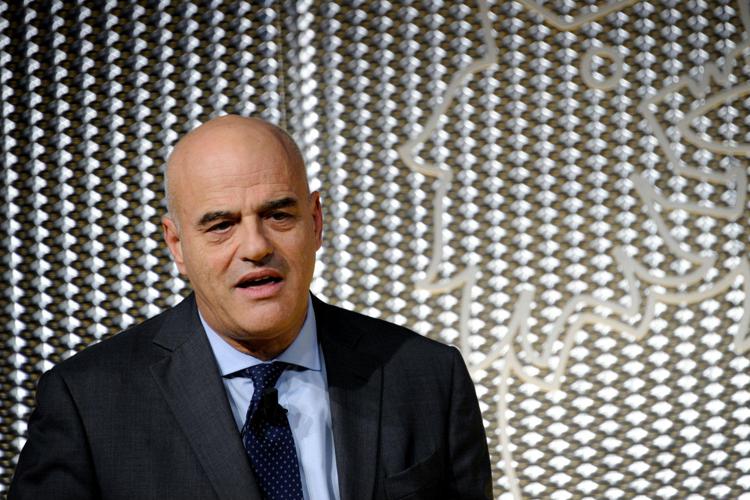

To mitigate climate change while ensuring access to energy for the world's growing population and reducing inequality between industrialised and developing countries, nations must cut consumerism and conserve resources by recycling more and transitioning to a mix of cleaner power sources, Claudio Descalzi, chief executive of Italy's oil and gas giant Eni told a closed-door conference on energy and sustainable development at the Pontifical Academy of Sciences on 8-9 June. Adnkronos has received a copy of Descalzi's keynote speech from Vatican sources, which is published below.
Your Eminence, Your Excellency, Professors, colleagues, Ladies and Gentlemen, it is a great honour to be here today and to open this dialogue on energy transition, a crucial topic, which will keep us together over the next two days.
Since the beginning of the industrial era, energy transitions were mostly driven by market dynamics and technological advancement. But the transition we need to make today has to be much more focused on the protection of the environment and driven by the extreme need to reduce the carbon footprint in all our activities, involving not only the energy system but also our development model.
ln developed countries we consume so much more than we really need, wasting energy, creating a huge amount of waste materials and polluting the environment. ln the last decades, this approach is leading to an increase of the global temperature, keeping us far from the 2°C limit, recognized as a target at the COP 21.
ln order to contain the temperature increase, the amount of global emissions we can issue into the atmosphere is limited and should not reach 3 Ttons of CO2, that represents our carbon budget. Anything over this threshold will cause irreversible damage to the environment. However, according to international agencies’ analyses we have already exhausted more than 70% of this budget, leaving a residue of around 850 Gtons. Notwithstanding this extreme situation, to date, the commitments made by various governments and signed off by 195 countries, for the first time at the COP21, are neither consistent nor sufficient and especially not binding, Europe apart.
In facing up to the crucial challenge of decarbonization, we have to focus on the energy sector which contributes around 60% of global emissions and it is one of the areas where we have means and technologies to mitigate its carbon footprint. The International Energy Agency (lEA) sustains that if no intervention is carried out, annual CO2 emissions will rise to 34 Gt of CO2 by 2030, causing a potential temperature increase of 2.7°C, and risking the running out of the carbon budget by 2040. On the contrary, in order to reach the target of keeping the temperature increase below 2°C, there must be a reduction of emissions by 40 - 70% by 2050, with a target of zero emissions by the end of this century.
And to reach it, a mandatory action plan is needed. However, fighting climate change is not the only challenge we have to face, but there is another crucial and urgent one, which is giving access to energy to an increasing population. Today, there are still 1.1 billion people in the world who do not have access to electricity, half of them, about 600 million people, in Sub-Saharan Africa, while 2.8 billion people, some 38% of the world's population, are using biomass for domestic cooking and heating, causing major health issues in millions of people throughout the world, especially women and children.
Moreover, in the coming two decades, the world's population will grow from around 7.5 billion to more than 9 billion, with an increase mostly concentrated in Africa and Asia, and by 2040 energy demand will have gone up by around 30%, mainly from non-OECD Countries.
Therefore, now really is the time that we, as energy operators, funds, institutions and governments, have to face the double challenge of giving access to energy to an increasing population while reducing the carbon footprint. This means pursuing a multidimensional approach, which will lead us to a new development model, which looks at long term goals.
ln the short term, the most effective solution is to intervene in the energy system - with the first lever being a change in the energy mix.
First of all, we should know that modern renewables such as solar and wind, despite the subsidies of about 780 billion S since 20071, still account for only 2% of the energy mix. And for the future, the international Energy Agency does not foresee major changes, with modern renewables having a share in the range of 4% - 7% in 2030, while hydrocarbons will still continue to meet more than 50% of the world's future energy demand.
Unless there is a major technological breakthrough, renewables will continue to suffer from several limitations such as intermittence, low utilization factor and geographical misfits.
Therefore, renewables must be supported by other sources to grow and to guarantee energy continuity.
On the other side, coal still plays a major role in the mix, meeting 27% of total demand and producing about 14 Gtons of CO2 emissions per year, out of the total 32 Gtons produced in the energy system. Looking in particular at the power sector, coal has a 37% share in the power energy mix, and is responsible for 71% of power emissions.
The first concrete action is to reduce the carbon footprint in this transition substituting the use of coal in the power sector with a more sustainable and abundant source like gas, bearing in mind that coal produces twice the CO2 emissions of gas, and without considering other pollutants as SOX, NOX and fine dust.
Natural gas is largely available, easily accessible, and has the lowest environmental impact of all the fossil fuels.
Moreover, there is a relevant gas infrastructural network already in place with spare capacity, especially in OECD countries.
Secondly, looking at the medium term, to support this transition, energy operators and regulators need to work together to build an integrated portfolio which aims at the combination of “clean” fossil fuels and efficient renewables.
Eni is working in this direction, with a distinctive model based on the integration of modern renewables with our existing assets. it consists in replacing internal gas consumption in our assets with solar or wind power. This way we leverage industrial, logistical and commercial synergies to create extra value in our projects and to reduce energy costs, at the same time making more gas available for local consumption.
To evolve in this direction, we have to drive scientific research to: minimize fossil fuel emissions through carbon capture, storage and reuse; reduce methane emissions and gas flaring; and overcome current limitations, which hamper renewables.
Additionally, digitalization will be a lever in accelerating this transition, as, according to a recent study from the Global e-Sustainabi/ity Initiative (GESI), smart digital solutions in manufacturing, agriculture, construction, mobility and energy could contribute to reducing CO2 emissions by about 20%, some 12.1 Gtons in 2030.
And finally for the long term, we have to go beyond mere emissions reduction, and define a new paradigm that explores new clean energy sources and technologies. An example in this direction is Eni's effort for the development of energy through nuclear fusion, which is based on the same physical process that occurs already in nature, for example in the sun, and which gives us safe, programmable and clean energy, without the production of waste or polluting gases. This would enable us to use a very low-cost fuel with infinite potential.
However, energy transition cannot just be the replacement of one source of fuel with another.
We must concentrate our efforts on building an efficient model that targets energy conservation through consumption optimization and greater use of the recycling and re-use of waste materials, minimizing losses and preserving energy. This is what we mean by the circular economy. The circular economy cannot be enough alone if we continue to pursue a model where we consume much more than we need.
It is essential to fuel a new culture that promotes efficiency in consumption and a change in mind-set, where we strive to make our activities and lives carbon neutral. And for this reason, on top of efforts to reduce energy emissions, we also need to work on offsetting CO2 emissions from the other sectors outside energy, through forest conservation and reforestation projects.
The transition path will not be the same for everybody in the world and cannot be the same for everybody, due to the considerable gap that exists in terms of development, access to energy, infrastructures and living conditions.
When we try to figure out a solution for a low carbon future, we only focus on OECD countries and we project our conditions worldwide, but this approach will not work. If we look at OECD countries, they make up 17% of global population, yet contribute 63% of global GDP. This disparity is extremely pronounced in Africa, which has 17% of the world's population, but only 3% of global GDP.
This economic gap is clearly related to access to energy: African per ca pita energy consumption is among the lowest in the world, with one third of China's consumption, one fifth of Europe’s and one tenth of America's. And all of this is despite the fact that Africa has more oil and gas reserves than the US, and a renewable potential for about 300.000 GW of solar energy and about 7.000 GW of wind energy.
This means that energy transition must be translated into different methods with different speeds, with a model that becomes much more sustainable where: in underdeveloped countries, development is triggered firstly by addressing access to energy which spins off benefits related to industrial growth, economic diversification, health and education; and in developed countries, accelerating the transition towards a circular, low-carbon model with an optimized energy use.
lt is not sustainable to continue to rely on a model that is based on a short-term perspective, whose benefits are limited to a privileged few. The world demands and deserves a new way of doing things. It needs a model where energy is for all and is based on collaboration between countries, with everyone looking at the longer term, to change the energy mix while increasing access to energy and reducing the gap between rich and poor countries. What is required is a change of pace and the joint commitment of companies, funds, and governments.